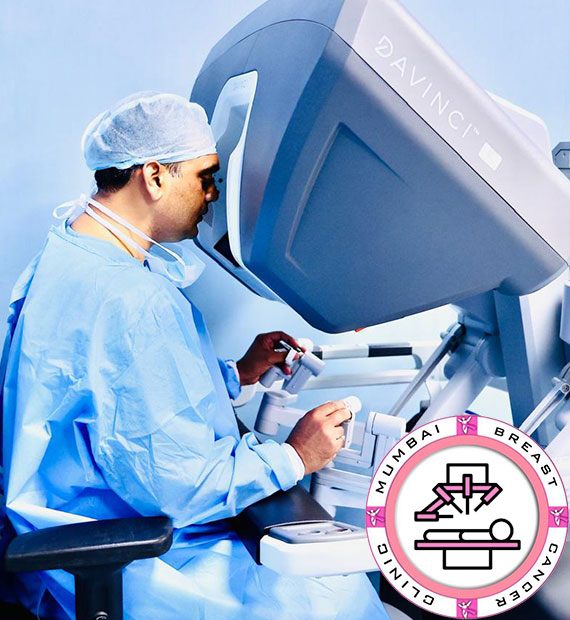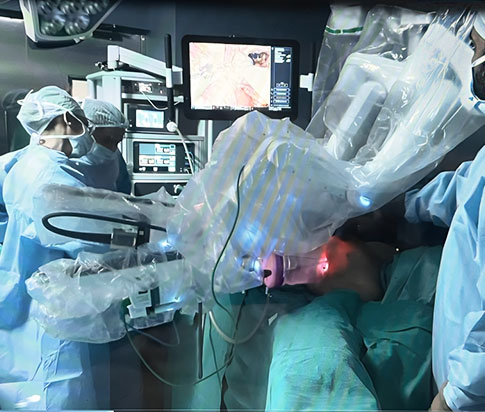

Robotic breast surgery is rapidly gaining popularity around the world for its precision, minimal scarring, and faster recovery times. It can be offered to carefully selected patients with breast cancer, as well as to those seeking risk-reducing mastectomy due to genetic mutations such as BRCA1 or BRCA2.
A traditional mastectomy usually requires larger incisions across the chest, which may lead to visible scarring, loss of sensation, and longer recovery. In contrast, robotic mastectomy uses advanced robotic technology to perform the procedure through a small incision hidden under the armpit. This technique allows surgeons to preserve important nerves around the breast, helping maintain sensation and supporting a more natural reconstruction — all in a single surgery.
By using the Da Vinci robotic system, surgeons gain enhanced vision, precision, and control. The system provides up to seven degrees of freedom, tremor elimination, 3D magnified vision, ergonomic comfort, and high-definition imaging. These advantages significantly reduce the risk of complications like bleeding or skin injury, minimize scarring, and promote a quicker, smoother recovery — helping patients return to their lives with greater confidence.
Robotic nipple-sparing mastectomy (RNSM) was first performed by Toesca et al. in 2015, and it marked a major step forward in breast cancer surgery. This technique allows surgeons to remove the breast tissue while preserving the skin, nipple, and areola through a single, hidden axillary scar, followed by immediate breast reconstruction with implants.
Clinical studies have demonstrated the safety, feasibility, and reproducibility of this approach. In a series of 29 cases, RNSM was completed in about three hours on average, with very few needing conversion to open surgery and no major complications such as infections.
This minimally invasive technique offers outstanding cosmetic results and can greatly improve a patient’s body image and overall quality of life after surgery.
You may be a candidate for robotic mastectomy if:
Every patient is unique. A full consultation, including imaging and clinical evaluation, will help determine if robotic mastectomy is the right choice for you.
Robotic breast surgery represents the future of personalized, patient-centered breast cancer care. By combining oncologic safety with superior cosmetic outcomes, this approach helps women not only survive cancer but also preserve their confidence, femininity, and quality of life.
If you would like to find out whether you are a candidate for robotic nipple-sparing mastectomy or robotic risk-reducing breast surgery, we invite you to schedule a consultation.
Our team is committed to providing personalized, advanced care focused on safety, aesthetics, and faster recovery.
Contact us today to learn more about how robotic surgery can help you move forward with confidence.

Robotic breast surgery may be considered for:
You may be a candidate for robotic breast surgery if:
Robotic breast surgery may be considered for: